2025 Sales Channel Effectiveness
This survey aims to benchmark sales outreach trends and performance across multiple channels in 2025. It will offer participating sales professionals comparative insights into which channels are performing best, how their peers are leveraging tools like AI, and what common hurdles others are facing in sales communication.
Download the Report
Join the Waitlist
Get an email as soon as the report is live.
By submitting this form, you agree to our Terms of Use, Privacy Policy, and consent to receiving marketing communications from us.

Sales (especially SaaS) is getting increasingly competitive, and standing out in a crowded industry has never been more challenging. Executing with precision and knowing where to focus your efforts when it comes to outreach strategies are critical if you want to keep growing.
That’s why with our 2025 Sales Channel Survey, we wanted to find out which channels are delivering results, and what’s just hype. This survey synthesizes insights from 64 sales professionals across roles, including account executives, SDRs, managers, and sales leaders. The results provide a snapshot of the challenges sales professionals face when it comes to connecting with prospects, the effectiveness or lack thereof with major sales outreach channels (email, phone, social media, events, texting, etc.), and the solutions.
A contradictory pattern we noted was that while approximately nine in ten sales professionals rely on email or social media to reach new prospects, only a fraction take the effort to personalize and make those messages count.
According to our data, a staggering 88% of sales pros surveyed use either email or social networking as a primary sales outreach channel, signaling that these digital platforms have now become the undisputed backbone of B2C and B2B prospecting.
Despite popularity, survey data also reveals low engagement as a top pain point for email outreach.
What’s causing low engagement? Is it buyer fatigue? Oversaturated markets?
We found that when it comes to outreach execution, there’s a striking gap: a meager 21%, just 1 in 5 respondents say they fully personalize their outbound emails. The vast majority settle for only basic customization or mass messaging tactics.
This disconnect highlights a critical issue facing today’s sales leaders: buyers are flooded with generic sales pitches. And with inboxes crowded more than ever, the difference between a deleted message and a closed deal often hinges on how tailored you make your buying experience, and how relevant that initial point of contact feels to the customer.
Therefore, the winners in 2025 and beyond are those who combine sophisticated data tools with deeply personalized and precise messaging.
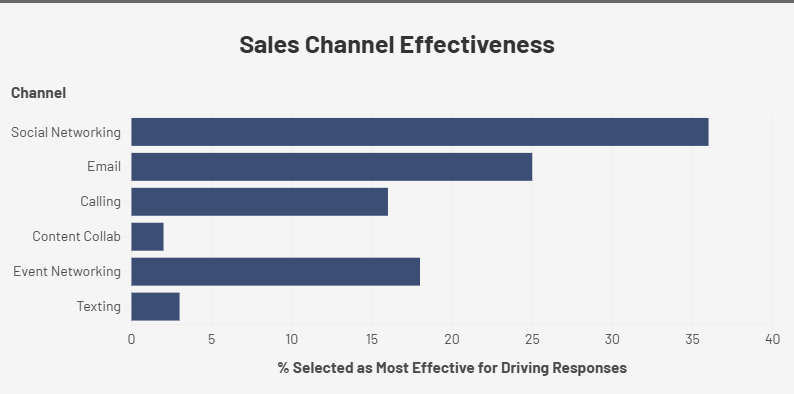
But the good news is that personalization doesn’t have to be a chore. Modern AI-powered platforms now enable sales teams to quickly access verified lead data and generate outreach that truly resonates, blending the scalability of digital channels like email and social selling with the intimacy of a human, one-to-one connection.
As you’ll discover in this report, embracing advanced tech—and closing the personalization gap—may be the single most effective way for sales pros to rise above the noise and deliver real results in 2025 and beyond.
Read on to learn more insights from the 2025 Sales Channel Survey.
Inside the Sales Channel Survey: Parameters & Survey Respondents
The findings in this report are based on the insights of sales professionals. To ensure the results reflect real-world trends—and not theoretical best practices—we relied on a diverse cross-section of front-line sellers and managers.
Who Participated?
The survey gathered responses from a total of 64 sales professionals spanning a wide range of titles and responsibilities:
- Account Executives (AEs)
- Sales Development Representatives (SDRs)
- Sales Managers
- Sales Leaders and Executives
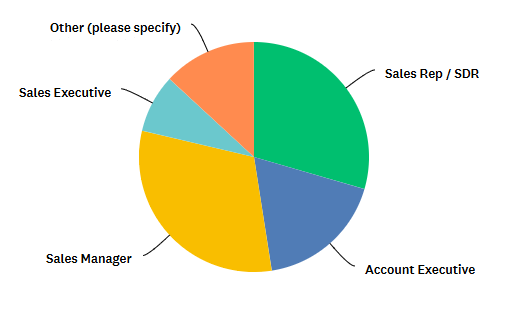
This diverse array of experience ensures that the insights we draw are comprehensive and represent the real practices and outcomes from the people familiar with every stage of the sales cycle, from prospecting to closing.
Industry and Company Size
Respondents included professionals from various industries (technology, consulting, manufacturing, financial services, and more), reflecting the universal importance of effective outreach across sectors. Companies ranged from fast-growing startups to established enterprises, aligning the report's findings with both scrappy inside sales teams and larger, more established organizations.
How the Survey Was Conducted
- Timing: All responses were collected in May and June of 2025, ensuring the results reflect the current marketplace, economic climate, and technology adoption curve.
- Survey Format: The survey included a blend of multiple-choice, scaled-response, and open-ended questions to capture both quantitative data and the nuanced perspectives of real sales practitioners.
- Sampling Method: Seamless.AI directly reached out to their customer and partner network, including LinkedIn groups and targeted emails, to ensure breadth and depth in the sample.
What We Measured
To analyze the evolving state of sales prospecting, the survey tracked:
- Channel Usage: Sales professionals shared which channels (email, phone, social media, texting, events, content collaboration) they use and the frequency of usage.
- Channel Effectiveness: Respondents ranked which channel produced the best results for cold outreach (i.e., engagement and responses from prospects), and which had the strongest influence on closed deals.
- Pain Points & Positives: Some survey questions probed each channel’s significant strengths (e.g., ROI, speed, ease of use) and drawbacks (e.g., low engagement, difficulty personalizing, compliance concerns).
- Trends & Tools: The survey explored rates of AI adoption (55% use for email writing), how deeply emails are personalized (only 21% fully personalize), and how sales teams leverage multiple channels in their campaigns.
Why This Matters
In a year where digital transformation and AI tools are redefining the rules of engagement, the survey’s insights arrive at a pivotal time. When aggregating data from those actually in the trenches, the 2025 Sales Channel Survey aims to deliver a reliable benchmark for sales professionals, leaders, journalists, and industry analysts who want to understand where the market is heading and how high performers are driving results.
For a full breakdown of respondent demographics, survey questions, and data tables, see the Appendix.
Bigger Picture: Which Sales Channels Are Leading…and Which Are Lagging Behind?
The 2025 Sales Channel Survey finds that while technology continues to diversify the outreach playbook, as sellers look to connect with ideal clients, they are converging around a handful of highly effective channels, with clear leaders and stragglers.
When respondents were asked about the channels they use for outbound outreach, two stood out:
- Email is the most widely used, with 79.7% of sales professionals including email in their outreach strategy.
- Social networking comes in a close second at 79.4%. Notably, the platform sales pros overwhelmingly favored for B2B engagement was LinkedIn.
Texting (66.1%), event networking (58.7%), content collaborations (50.8%), and calling (49.2%) round out the remaining channel usage.
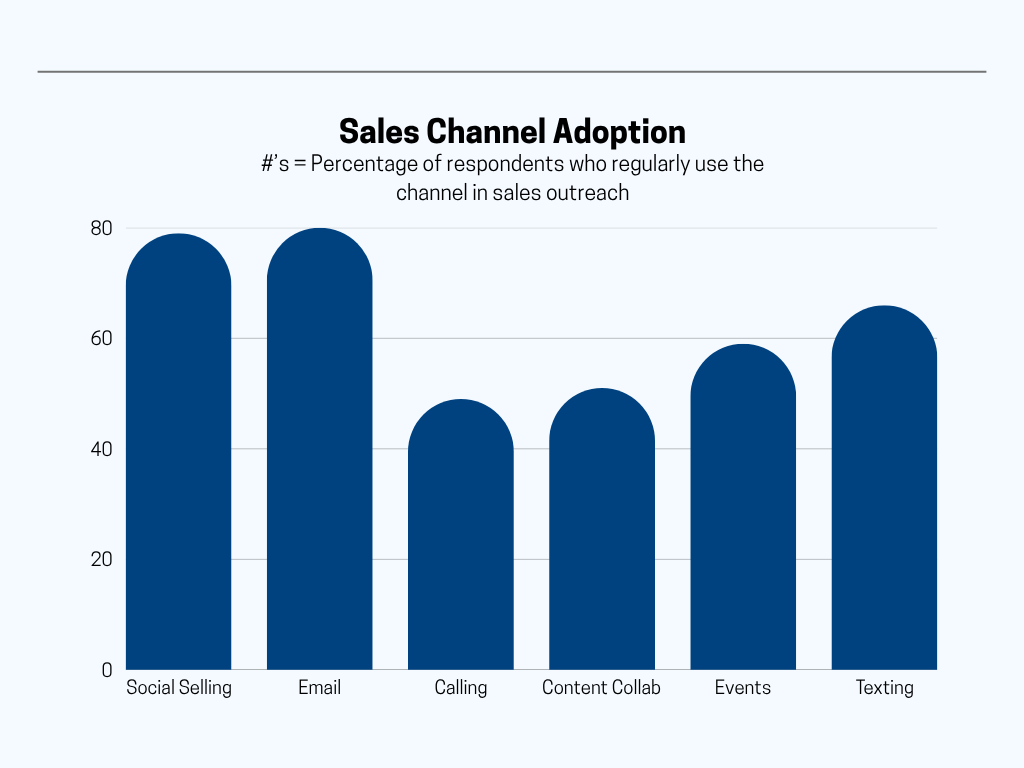
Despite high usage, we found that adoption doesn’t always translate to high impact or return. When sales pros were asked which channel actually delivers the best results in cold outreach, the picture shifts:
- Social networking (specifically LinkedIn) now leads, with 36% naming it their most effective channel for eliciting a response from cold outreach.
- Email is close behind, chosen by 25% of professionals as most effective.
- Phone (calling) earns just 16%, with even lower scores for event networking (8%), content collaborations (13%), and texting (3%).
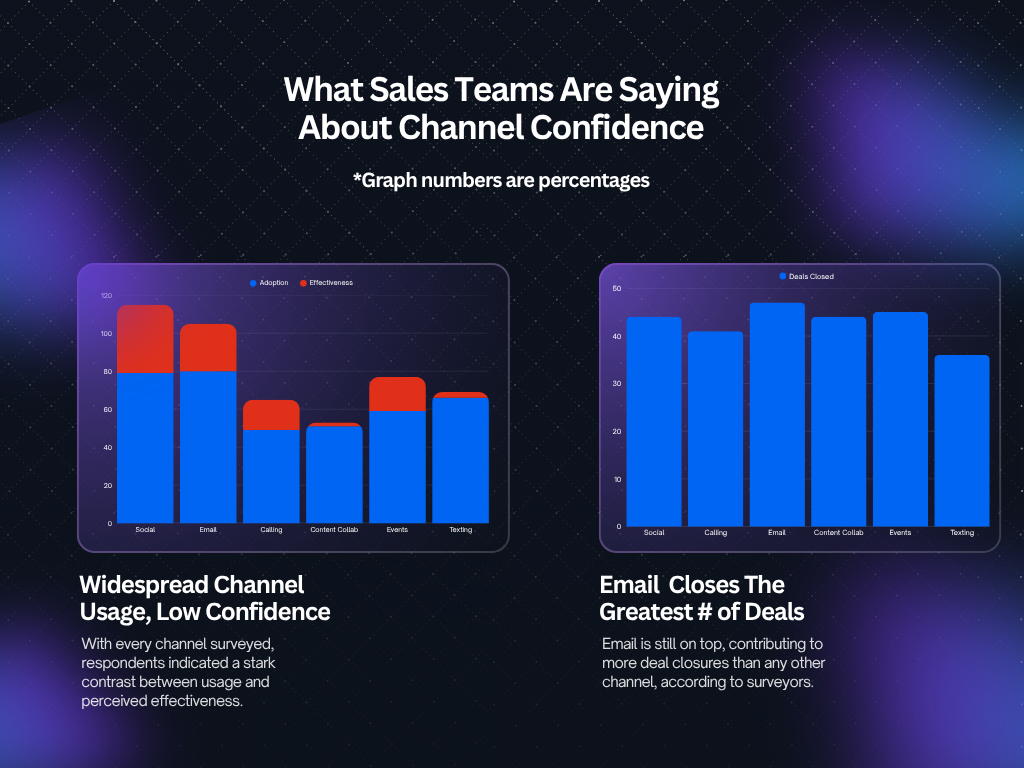
Key Takeaways and Trends
Social Selling Surges:
The rapid rise of LinkedIn as a trusted outreach channel is a headline finding. Sales professionals pointed out that the top reasons for their success on LinkedIn were warmer leads on the network and the ability to build personal and/or company brands. Don’t ignore the power of Facebook for branding and Reddit for community building as additional B2B resources for social selling.
Email Remains a Powerhouse:
Despite competition, email still underpins the majority of sales outreach, and it’s the single channel most likely to influence a closed deal (47% of closed deals on average began or were primarily influenced by email).
Traditional Cold Calling Is Dying Out:
Fewer than half of sellers now rely on cold calling, and only 1 in 6 rate it as their top response driver—a major shift from sales playbooks of the past.
Texting:
Texting is a popular sales strategy, with two-thirds of respondents using it; however, this channel nets the lowest “most effective” rating. Thus, sales teams are clearly experimenting with text, but aren’t seeing robust results yet or have figured out how to be engage with the audience on this platform.
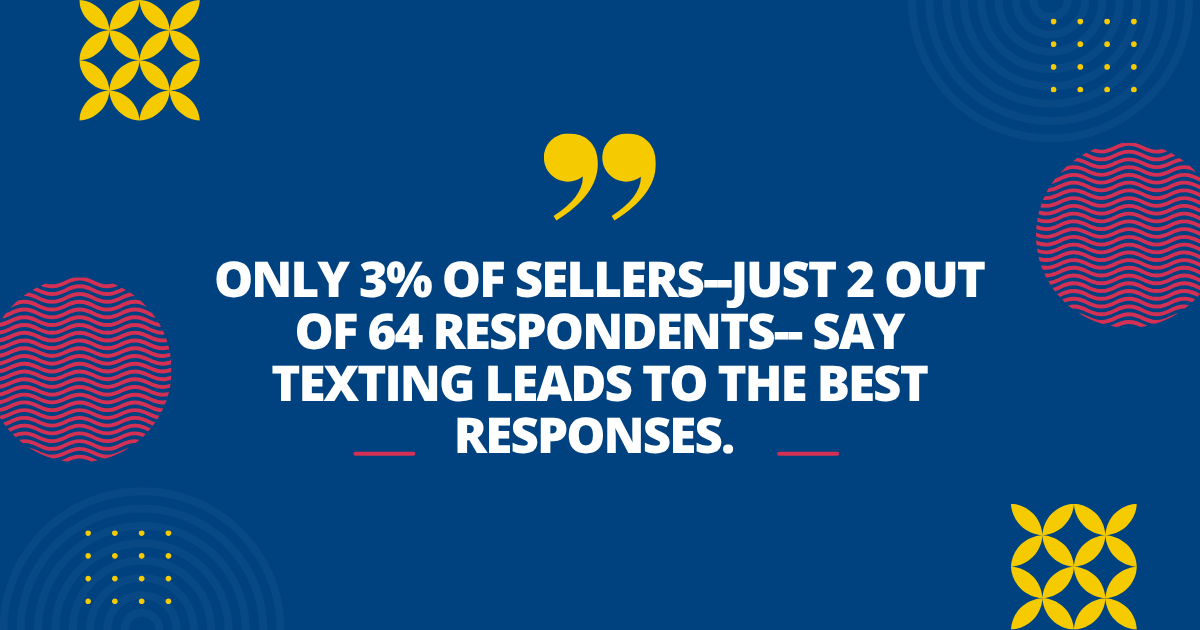
Event Networking and Content Collaboration:
These channels have passionate advocates, especially for relationship-building, but score lower on measurable response and deal influence. Typically these endeavors require additional support and resources.
Best Sales Outreach Channels in 2025
While every sales channel offers opportunities, each comes with its own set of advantages and pitfalls. The 2025 Sales Channel Survey reveals not just what’s popular, but why certain tactics help close deals—and where others are still making costly missteps.
Email: Still King, But Not Without Hazards
When it comes to doing outreach in 2025, email stands on top as the highest adoption rate as voted by responses in our 2025 survey, but email doesn’t come without some headaches.
Email ranks second on the list of most effective channels because it has some significant hurdles to overcome in order to be successful.
Why it Works:
- Faster scaling with use of tools and automation
- Low cost solutions with trackable return
- Fully customizable and targeted outreach
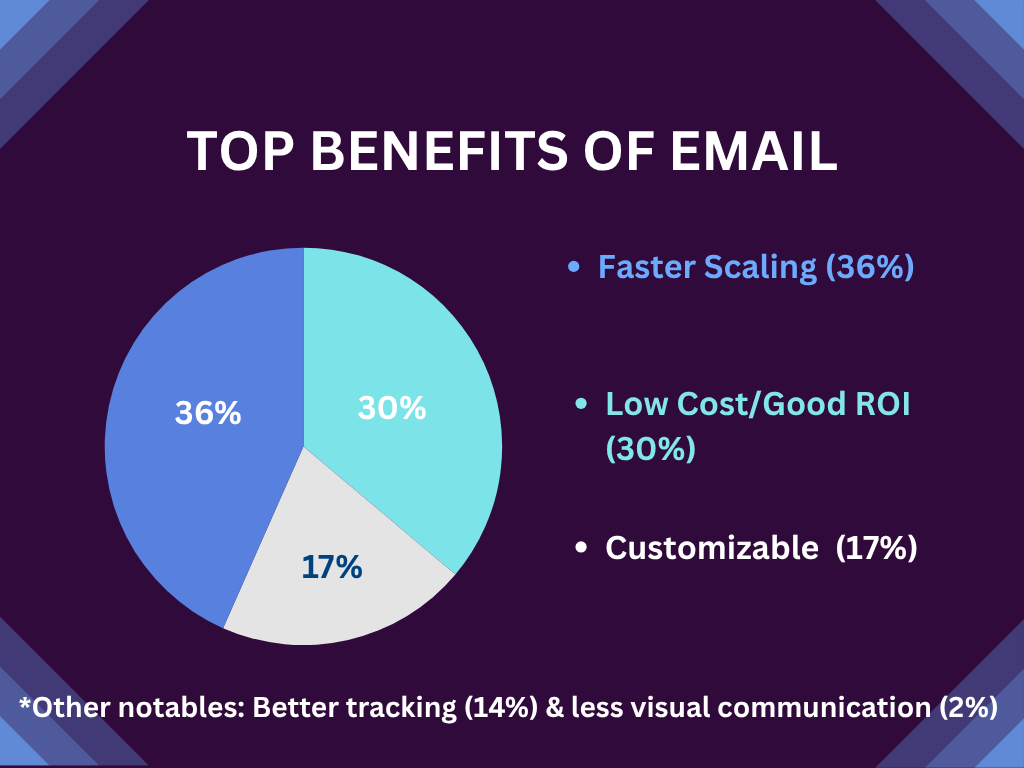
While faster scaling and lower cost were some of the top benefits, low engagement and spam are notable pain points that professionals see as obstacles to be effective.
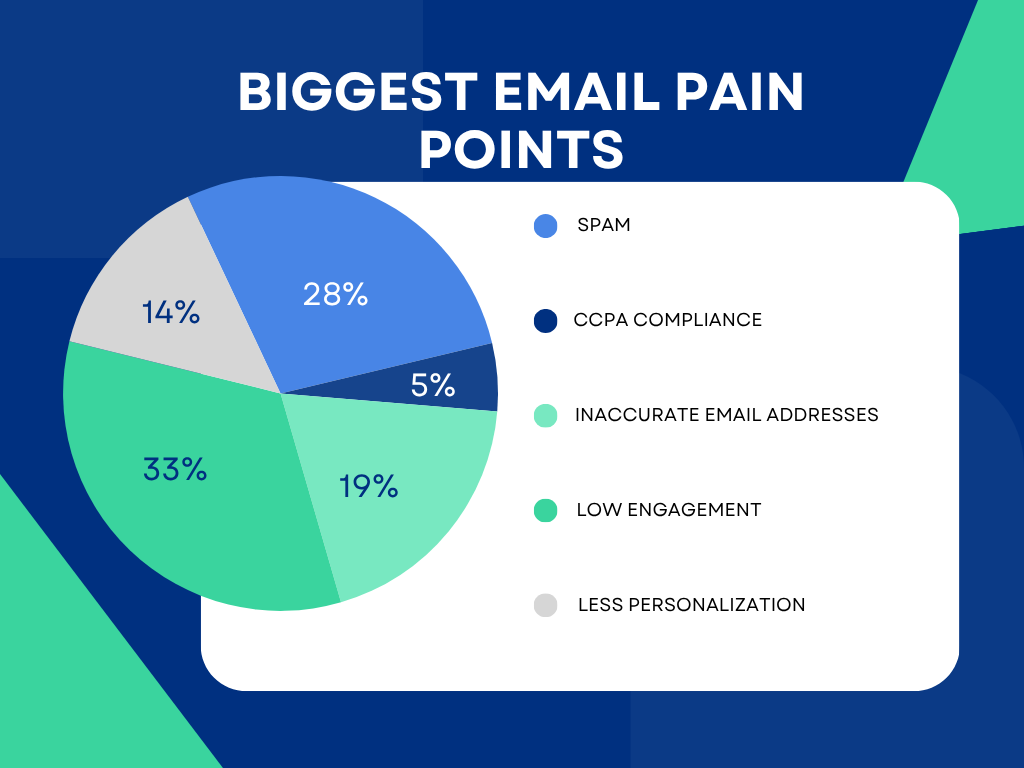
What Works:
- Tailored and targeted, relevant messages
Example: Personalizing your initial email with a prospect’s name, referencing recent company news, and aligning your offer with their needs (whether they’re persona or industry-driven pain points) dramatically increases email engagement. One respondent shared that just by “Customizing the first line to show I did my homework gets a reply at least 3x more often.”
- Smart use of tracking and sequencing tools for building drip campaigns
Leveraging tools to monitor opens and automate well-timed follow-ups ensures you’re persistent without being pushy. Tools like Seamless.AI can help personalize email distribution as well as track email open rates for a complete sales solution.
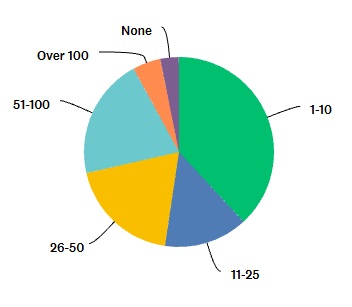
What Not to Do:
- Don’t mass-send or engage in purposeless spamming
Over 30% of respondents identified low engagement and spam complaints as their biggest pain points. Sending the same generic pitch to every contact almost guarantees your outreach will be ignored or flagged.
- Neglecting data quality or scrubbing bad data
Nearly 19% cited inaccurate email addresses as a top frustration. Use trusted sources like Seamless.AI to find emails and keep your list clean
33% of respondents noted low engagement as one of their top pain points in the survey indicating a need to deliver more personalized and compelling messaging to reach prospects.
Social Networking (LinkedIn & Facebook): Warmer Leads, But Don’t ‘Post and Pray’
Sitting at the top of the list in terms of effectiveness at 36% of responses, and just behind email in terms of adoption at 79% is social media.
Social selling remains a strong prospect opportunity for organizations to generate sales in a consistent outreach channel.
Why it works:
- Builds personal and professional branding for both now and in the future
- It usually doesn’t cost anything to start up and engage
- The relationships built are stronger than typical cold outreach
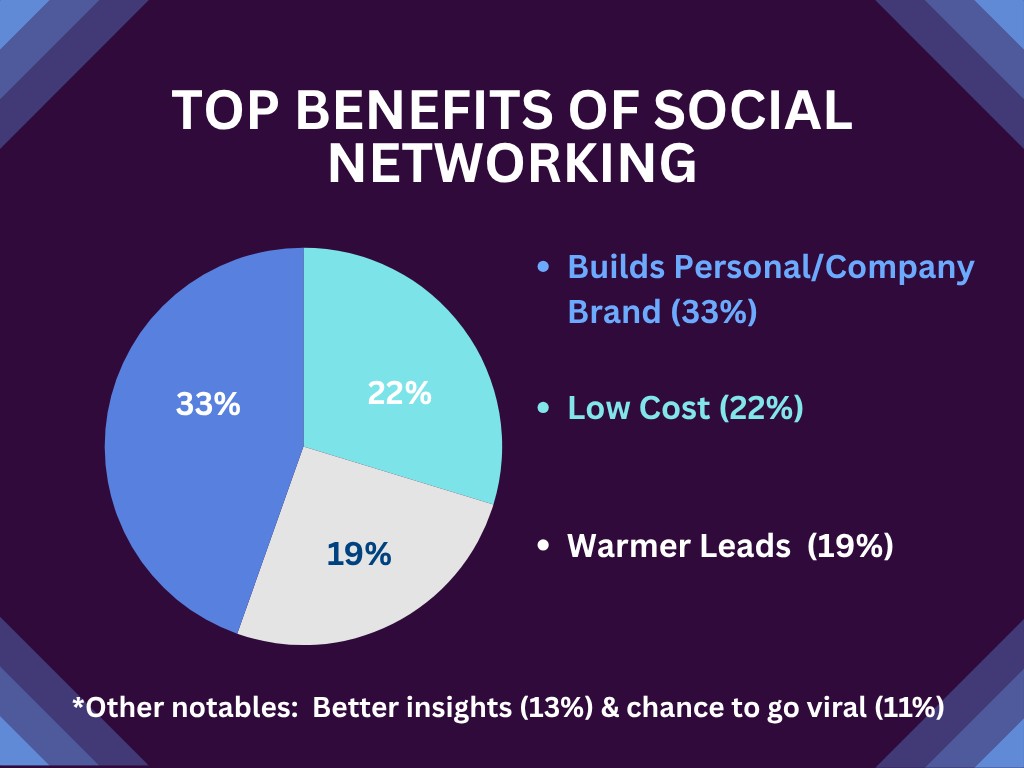
The top benefits for social selling include personal branding, low cost to start and warmer leads, while noting it’s time consuming, higher cost to penetrate, and feature changes can cause immediate impacts.
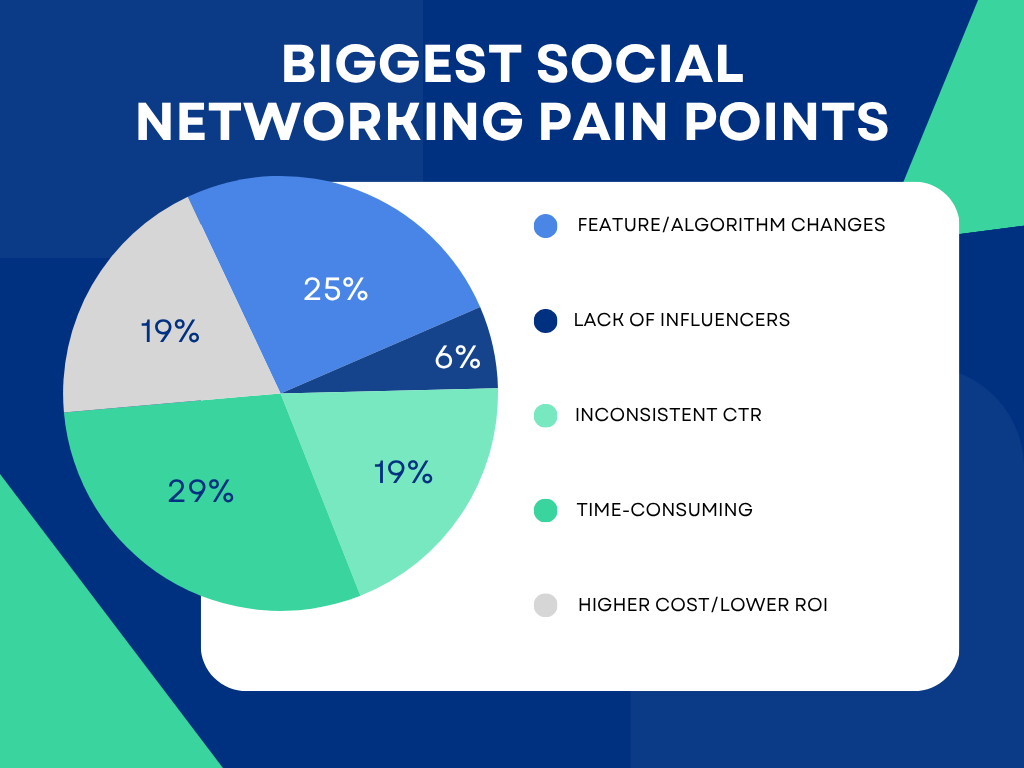
What Works:
- Building authentic connections and relationships
Engaging with prospects’ content, sending personalized connection requests, and following up with tailored value leads to higher response rates and conversion. Plus it’s good to make yourself seen and heard. The more you are on the prospect’s timeline, the more you get consideration and trust when doing outreach.
- Thought leadership and brand building
Regularly sharing insights on social media and participating in industry conversations helps build credibility and attract warm inbound leads. Even if you don’t have any aspirations of becoming a social media influencer, doing something as minor as leaving comments on your colleagues’ posts can be just as effective as posting your own content.
What Not to Do:
- Cold DM blasts or drop immediate “pitch slaps”
Over 30% say the biggest pain point with social networking is “standing out or getting noticed.” Social media is saturated with voices. Mass messaging without any context or relationship won’t resolve this issue. Your messaging will be ignored or worse, damage your reputation.
- Neglecting to Build Your Network Over Time
Expanding your reach online takes time and care. Social selling is not an overnight success, and it doesn’t deliver an immediate response like what salespeople can get from calling. Jumping straight to the sale rarely works when you’re online, and 20.5% cite the time it takes to “build up credibility/network” as a major pain point. Despite the time investment, it’s important to underscore that social networking can have more reach than any other channel. Additionally, the opportunity to build a larger audience at scale is unbeatable with social.
Cold Calling: Still Fast for Feedback, But Not for Everyone
Calling is one of the more polarizing sales channels in the survey with nearly a 50/50 split saying they use or don’t use it in 2025.
It ranked 4th on the list in terms of effectiveness behind Social, Email, and Event Networking, but it still holds significant value in terms of ROI and direct response.
Why it works:
- More personable and direct with human contact to prospect
- Immediate feedback or response including deals closed
- Great for relationship building and getting foot in the door
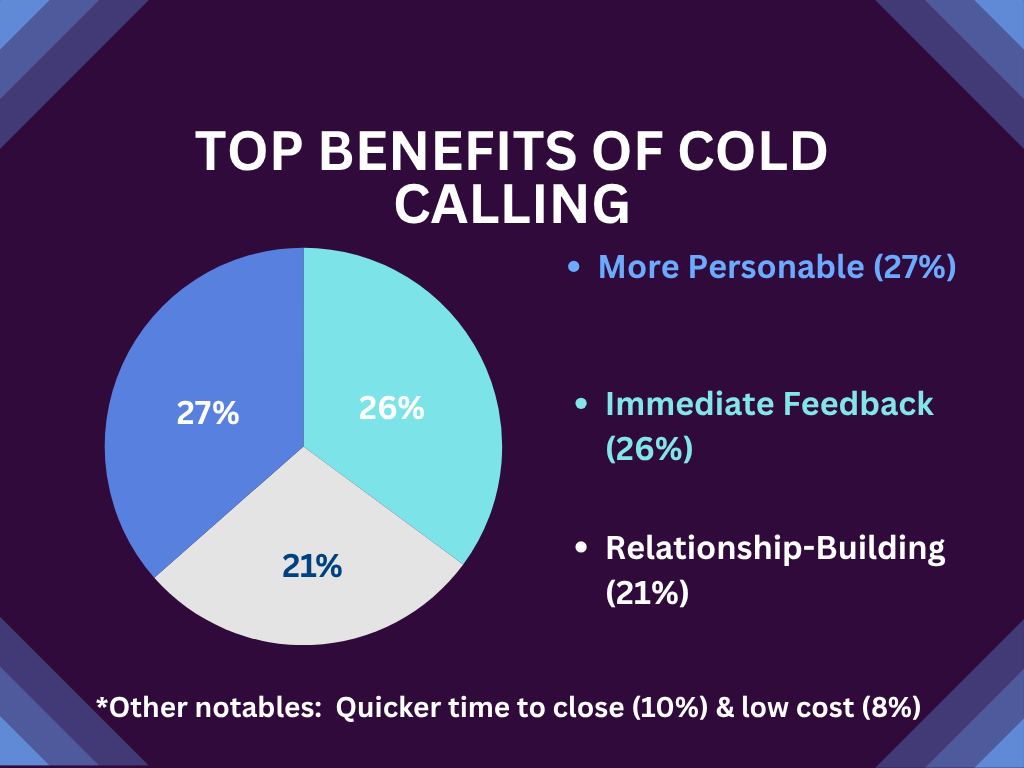
While cold calling can be effective and generate a good return on investment, it doesn’t come without its pain points including low success rates, high stress, and fatigue being genuine concerns for team builders.
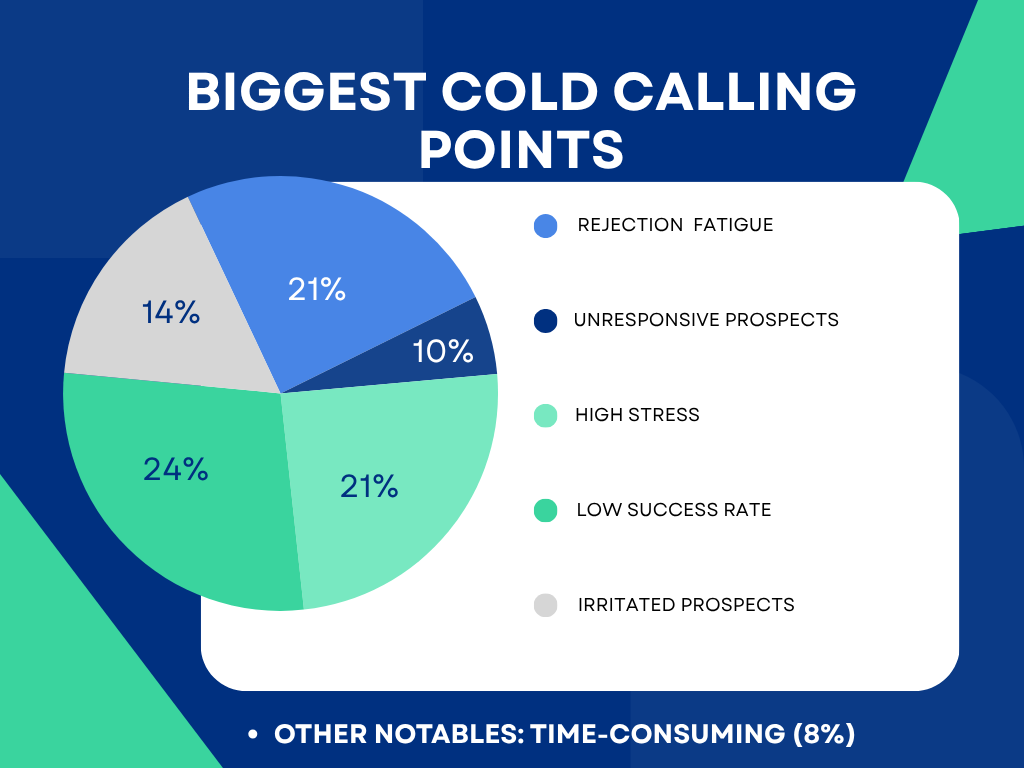
What Works:
- Use for urgent, high-priority prospects
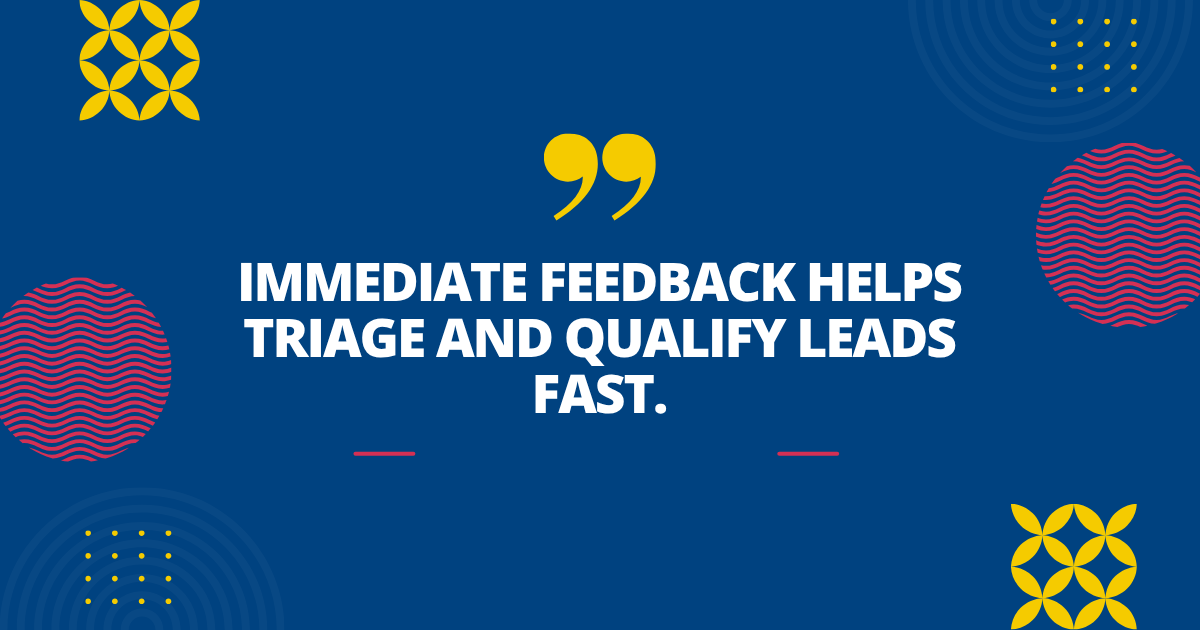
“Sometimes a quick call unlocks an opportunity that emails can’t,” one seasoned rep shared. Immediate feedback helps triage and qualify leads fast.
- Make the initial connection, but follow-up after with email or social (LinkedIn)
Warming up your call works poorly on its own. But if you integrate digital touchpoints into your outreach strategy alongside cold calls, you can significantly increase answer rates.
What Not to Do:
- Make random cold calls with no context or intent data
Modern buyers expect context and value in their sales experience. Contacting random people who aren’t expecting your call means that you’re going to end up in the voicemail more often than not. This lack of responsiveness was a major challenge that respondents identified with cold calls. 43% said nobody picks up, and 27% felt calls are widely perceived as “interruptive or annoying.”
- Ignoring compliance/consent or time factors
No one likes being blindsided. Stick to opt-in and cold calling best practices. Tools like Seamless.AI help you find targeted contacts from ICP companies to give you an edge in cold calling.
Event Networking: High Effort, High Reward (If Done Right)
Event networking is a key part of the sales toolkit for the majority of respondents with nearly 605 saying they use it. Its greatest strengths are in fostering strong relationships, staying informed about the market, and connecting one-on-one.
However, it has significant limitations in terms of cost, time, and ROI measurability. Nearly a quarter of respondents do not use event networking at all, showing this method isn’t universally embraced.
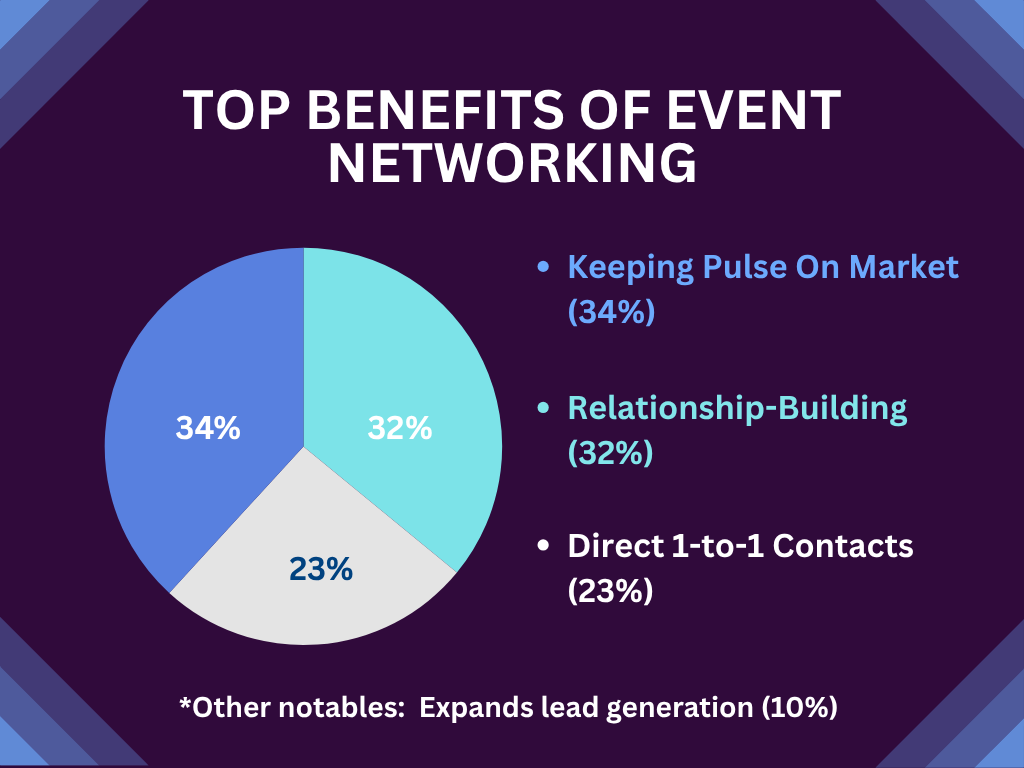
Why it works:
- Creates direct engagement opportunities with potential clients
- Interact with other professionals and industry veterans to learn about trends
- Build warmer leads with deeper connections
There are challenges with event networking like costs and planning time, trackable ROI, and they are time consuming where agents have to spend time away from their homes.
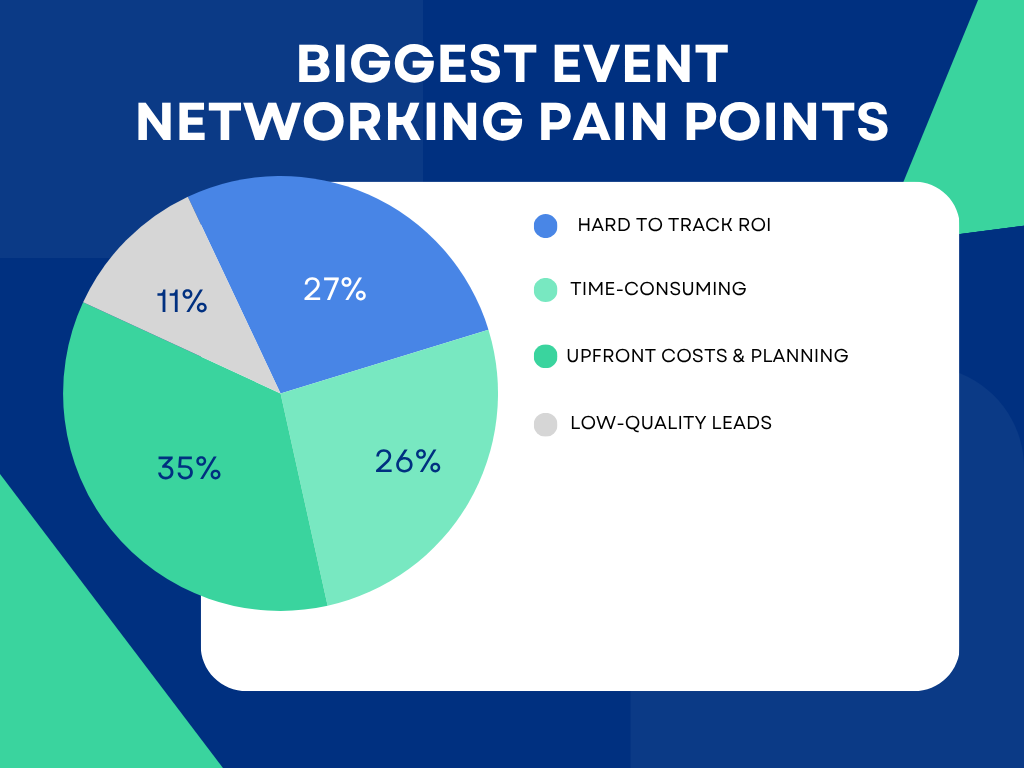
What Works:
- Genuine Relationship Building
32% of sales pros respectively, cite relationship-building as one of the top benefits of in-person networking events and collaborative webinars. Being in a room of your peers, making face-to-face contact, injects human connection back into sales strategy and helps you stay on top of industry trends.
One of the best approaches respondents shared for making the most out of in-person networking is to lower your expectations. Don't treat events as lead-farming expeditions because this comes across as aggressive and sales-y. Instead, just focus on making authentic connections. Expect to play the long game if you’re trying to close on a lead from an event.
Example:
Highlight customer stories about using your platform to form strategic partnerships, close deals through stronger relationships, or facilitate more valuable in-person meetups at conferences.
- Address ROI Measurement
“Hard to track return on investment” is a major pain point. Event-attending sales professionals value solutions that help them clearly demonstrate the impact (in leads closed, deals made, etc.) from event networking activities.
Example:
Offer case studies or features showing how your solution ties event attendee data directly to sales outcomes, such as an app that scans badges and tracks their journey from contact at an event to closed deal.
What Not to Do:
- Don’t Add Complexity or Burden
Event networking is already seen as costly and time-consuming. Avoid pitching solutions that require extra administrative work or lengthy setup—simplicity is key.
Example:
Don’t offer an event tool with a complex onboarding process or that demands extensive configuration. Instead, highlight one-click integrations and “works out of the box” functionality.
- Don’t Ignore Practical Giveaway Preferences
Flashy, thematic, or impractical giveaways don’t resonate. Respondents prefer branded swag like apparel or pens—useful items that reinforce brand presence without gimmicks.
Example:
If you’re marketing event sponsorships or exhibitor packages, feature high-quality, branded merchandise in your offers rather than novelty toys or unrelated items.
Content Collaboration
Coming in at the lowest in terms of effectiveness at 2%, but 50% adoption rate, this channel remains a strong option but has a lot of obstacles to overcome.
Responses cited increased authority, expanding audience reach, and warmer leads as some of the benefits to doing content collaborations to generate new leads.
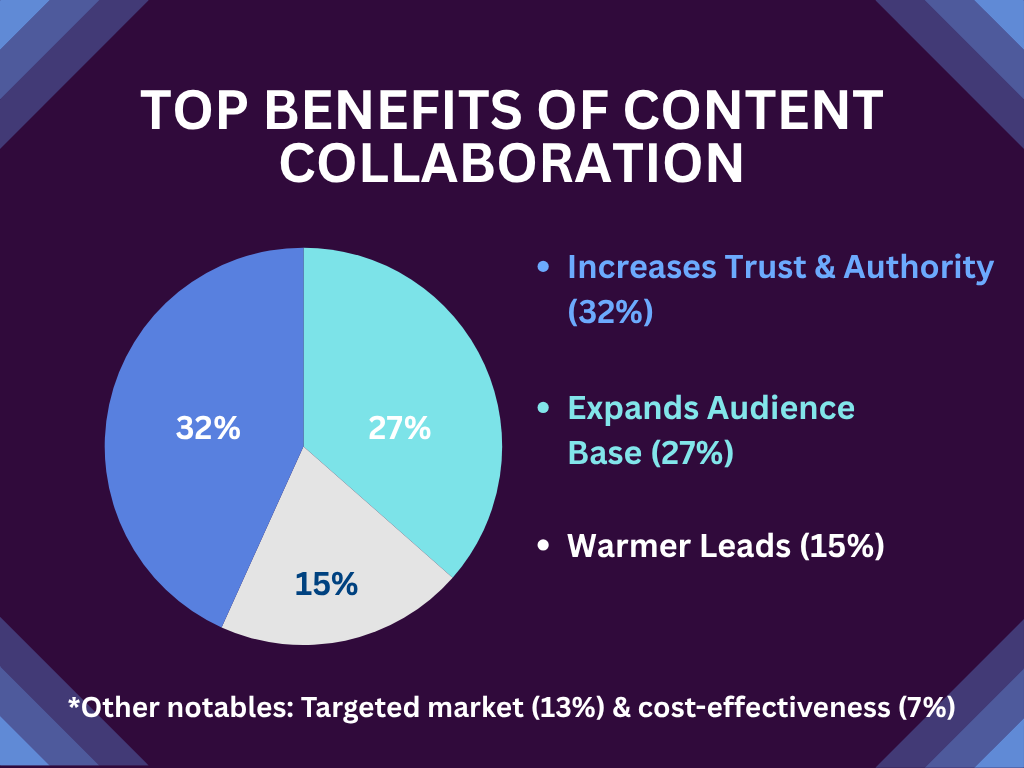
Some of the contributing factors to why this sales channel is less effective are loss of content control, conflicts of interest or competing partners, and reduced returns.
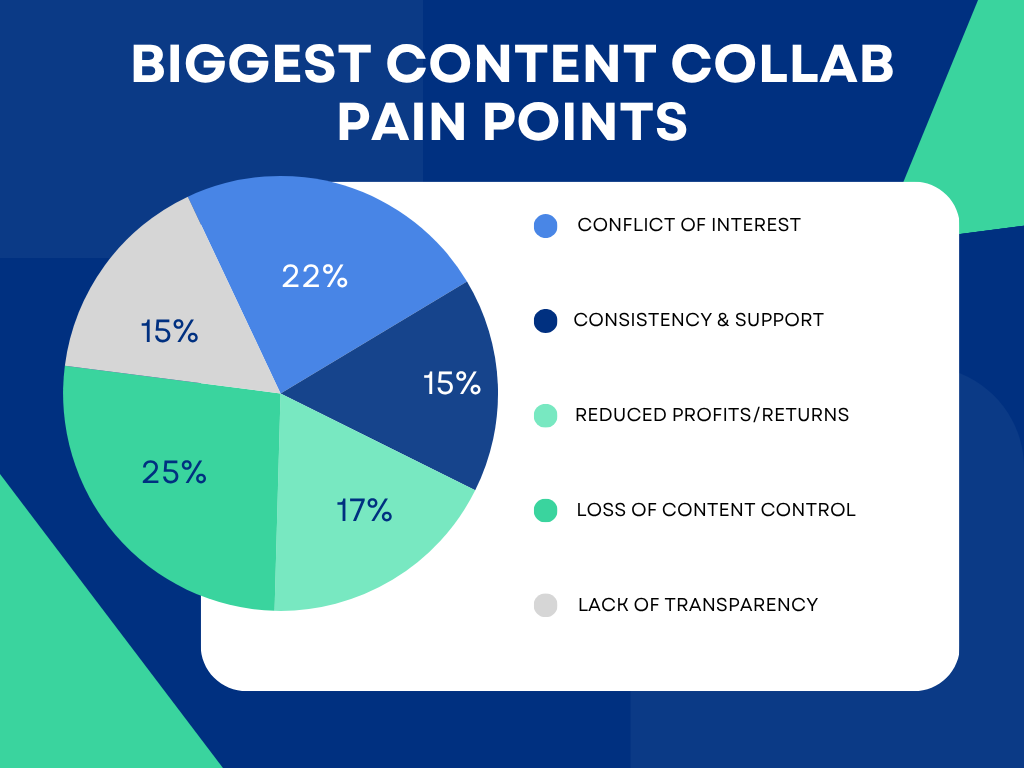
What Works:
- Value-First Content Partnerships
Demonstrating expertise through joint articles, podcasts, or events helps position you as a trusted advisor.
Sales professionals have to think strategically about which content partners they want to work with in order to be successful. It’s not just a matter of collaborating with anyone, but a synergy that can build on what you are already doing.
Of the respondents that use this method, only 8% said they do webinars, while tied at the top with 18% was video and content articles as the top options.
- Set Clear Expectations and Guidelines
Respondents indicated that issues like loss of content control and conflicts of interest are critical pain points. To avoid these, define roles, approval processes, content standards, and mutual expectations up front.
Example:
Draft a collaboration agreement that outlines who creates what, the timeline for drafts and approvals, ownership of final assets, and review checkpoints. This proactive communication helps ensure both parties are aligned and preserves brand integrity. The top response for how many collaborations to do per year was 6-10 at 36%.
What Not to Do:
- Time and Resource Sink
41% say collaborations take too much effort and loss of control for limited ROI compared to the other channels, and returns are also difficult to track. Only invest if you can follow up and measure real outcomes.
- Don’t Overlook Conflicts of Interest
Another key issue, highlighted by 21.67% of respondents, is "Conflicts of interest." Collaborating with partners who have overlapping, competitive, or incompatible interests can erode trust and even damage both brands.
Example: Don’t collaborate with companies that could later become direct competitors or whose values or products don’t align with yours, as this could confuse your audience and damage your reputation.
Texting: Best for Confirmations, Risky for New Prospects
Ranking near the bottom with only 3% of the votes was texting. This somewhat newer area, which became more popular with the rise of smartphones, has yet to be fully tapped but has a lot of potential and added advantages like push notifications and more.
Although it’s not as common for cold outreach, 66% of respondents said they use texting to generate sales. Of the respondents that said they do texting, nearly half said they send texts to between 5-20 contacts per day.
What Works:
- Meeting Reminders
Survey respondents noted high open rates with texting (sales texts are actually getting read), which makes this channel ideal if you’re looking to confirm arrangements or send time-sensitive, urgent info. But just because your message gets opened doesn’t mean it gets read or welcomed. As with all the channels, but especially with text messaging, always keep it professional and permission-based.
- Use Text With Existing Clients or Opted-In Leads
It’s best to resort to text messaging for clients and warm leads who have already encountered you and your brand in some capacity before.
What Not to Do:
- Overusing or Sending Unsolicited Texts
- Lack of Professionalism
3 Emerging Trends: The New Playbook for Winning Outreach
The 2025 Sales Channel Survey shows that success in prospecting isn’t just about choosing the right channel. It’s about staying ahead of the curve with data-driven personalization, purposeful use of technology, and the ability to adapt accordingly.
Here are three trends that we think will change the outreach playbook for sales pros everywhere:
1. AI Adoption: Sales Tech Goes Mainstream
One of the most striking findings from this survey is how rapidly AI-powered tools are transforming salespeople’s approach to prospecting:
Response quote: “AI has saved me so much time. I use it to draft and refine messages, so I’m not reinventing the wheel every day. It’s especially useful for customizing outreach at scale.” — Team Lead, Sales Ops
2. The Personalization Gap: A Missed Opportunity?
Despite the tech boom and the speed at which teams have incorporated AI into their daily tasks, only 21% of sales pros fully personalize their outbound emails. But on the flipside, over 30% of professionals cite low engagement and generic messaging as the greatest challenges to email outreach. However, at the same time, they aren’t using the personalizing capabilities of AI to its greatest potential.
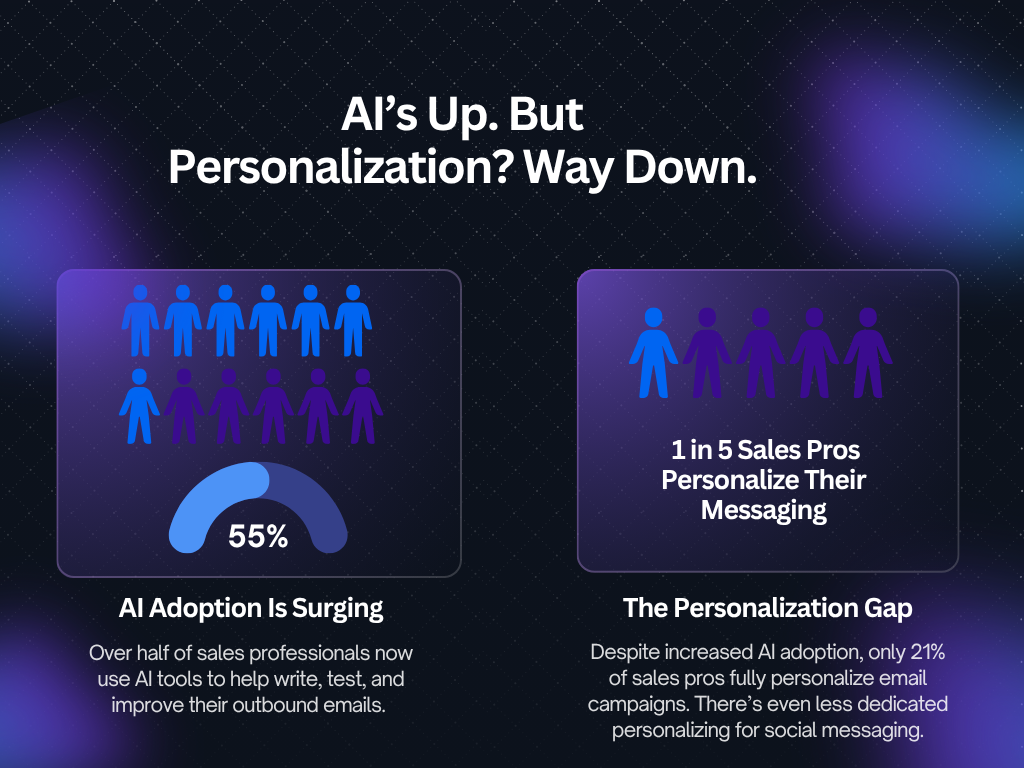
This suggests that many teams overlook the scalability of AI personalization and instead still lean on generic mass emailing. This is ultimately a missed opportunity for the higher open and reply rates that come from true 1-to-1 relevance.
Why it matters: As competition for attention intensifies, “personalization at scale” is emerging as a critical differentiator for response and conversion.
3. Social Selling Surpasses the Cold Call
Social networking (driven in large part by LinkedIn) has officially overtaken traditional cold calling:
- 79.4% of respondents use social networking as a regular outreach channel, which is nearly equal to email’s dominance.
- 36% now rank social as their most effective channel for getting cold outreach responses, compared to just 16% who say they get some level of responsiveness from calls.
On top of responsiveness, surveyors also rank LinkedIn highly because it delivers “warmer leads” and makes it easier to build professional trust with prospects. As one enterprise SDR put it: “LinkedIn leads are almost always warmer and easier to convert. It takes more time to build your network, but the engagement is real.”
The New Sales Formula
Integration > Isolation: Instead of sticking to one or two channels, teams that drive the best results blend email, social, phone (and increasingly event networking) for a diversified, multi-touch approach to outreach that appeals to
From Volume to Value: There’s a growing emphasis on quality conversations that focus on a more consultative approach to sales, enabled by intelligence tech like Seamless.AI that supplies better data and relevant talking points in half the time. Not just generic pitching that prioritizes high outreach numbers.
Today’s sales leaders are using these tactics to reimagine traditional selling and empower teams to be more purposeful and strategic in an era of information overload.
Real Voices: On-the-Ground Insights from Sales Pros
Statistics can reveal what’s happening, but the stories and experiences of working sales professionals bring crucial context to the numbers we found. The 2025 Sales Channel Survey includes not just quantitative results, but also dozens of open-ended responses that reveal how sellers feel about today’s outreach challenges and opportunities.
Connecting With Prospects Is Harder Than Ever
“The biggest issue with cold outreach is getting noticed among the noise. Everyone gets so many emails a day that you need to be creative, relevant, and persistent just to get a reply.” — Sales Manager, B2B SaaS
Many sales reps echoed this struggle. With so many channels saturated, it’s the teams that combine research, data, and genuine connection that win attention, further underlining how obsolete “mass-blast” emails and generic DMs have become.
Build Trust, Not Replies: The Social Selling Edge
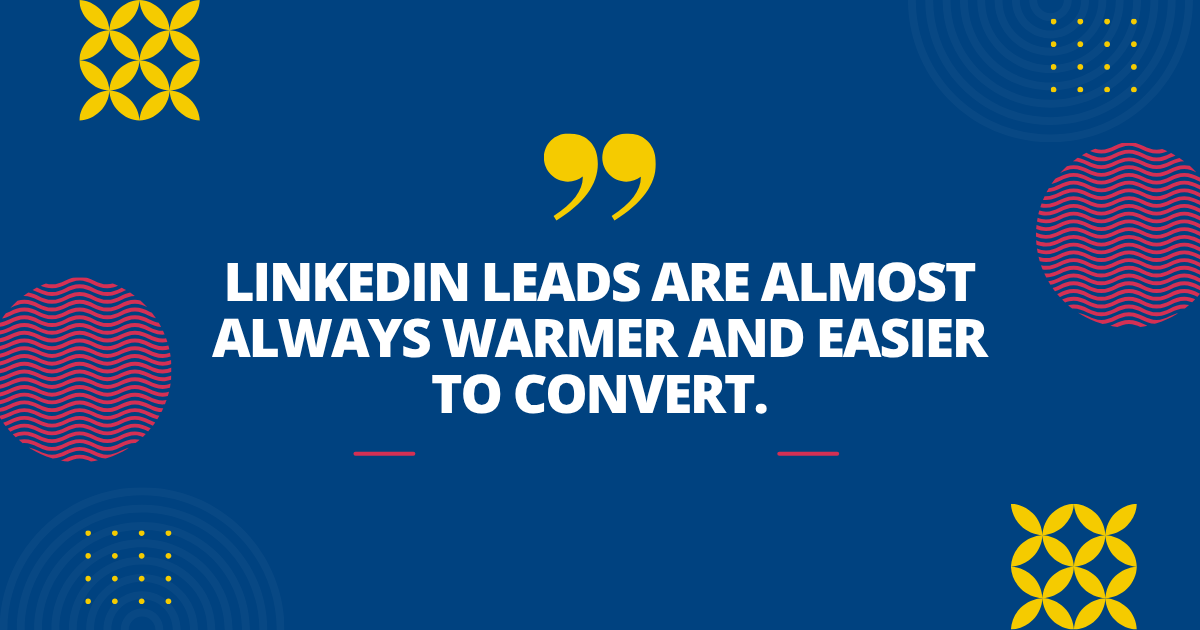
“LinkedIn leads are almost always warmer and easier to convert. It takes more time to build your network, but the engagement is real.” — Enterprise SDR
Respondent feedback consistently pointed to LinkedIn’s power for trust and credibility when it comes to sales outreach. By engaging with prospects’ content and sharing industry expertise, sellers can earn replies that cold channels rarely achieve.
The Power (And Challenge) of Email
“Email is the backbone of my prospecting. It lets me track opens, test messages, and reach a huge audience affordably, but it’s getting tougher [because] people ignore more messages.” — Account Executive
Most pros recognize that email is foundational for starting outreach and advancing deals. However, they also point out that disengagement is a problem that’s only exacerbated when we factor in poor personalization and data management.
Rethinking Cold Calls
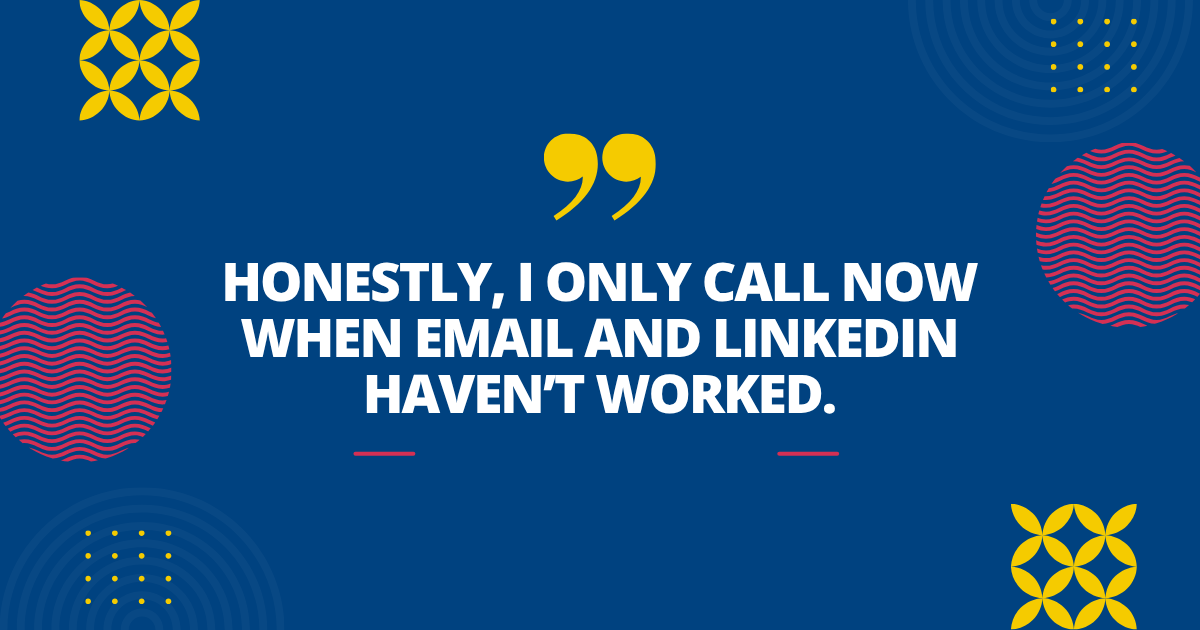
“Cold calls are high pressure and rarely picked up. Honestly, I only call now when email and LinkedIn haven’t worked.” — Senior Sales Rep
Notable patterns from survey respondents’ feedback indicate a clear shift in attitudes about cold calling: phones remain valuable for immediate feedback and late-stage follow-up, but the glory days of “dialing for dollars” are becoming outdated.
Tech as a Game Changer
“AI has saved me so much time. I use it to draft and refine messages, so I’m not reinventing the wheel every day. It’s especially useful for customizing outreach at scale.”
— Team Lead, Sales Ops
When it comes to tech and the AI wave, respondents overwhelmingly agreed: technology—and especially tools like Seamless.AI—aren’t just “nice-to-haves” anymore; they’re becoming central to any effective outreach strategy that’s targeted and value-centric.
Actionable Takeaways for Sales Teams
With inboxes more crowded, buyer fatigue, and an increasing number of outreach channels, it’s not enough to simply work the list. The 2025 Sales Channel Survey points to clear actions that help sales teams rise above the noise and deliver real results:
Personalize, Don’t Pulverize
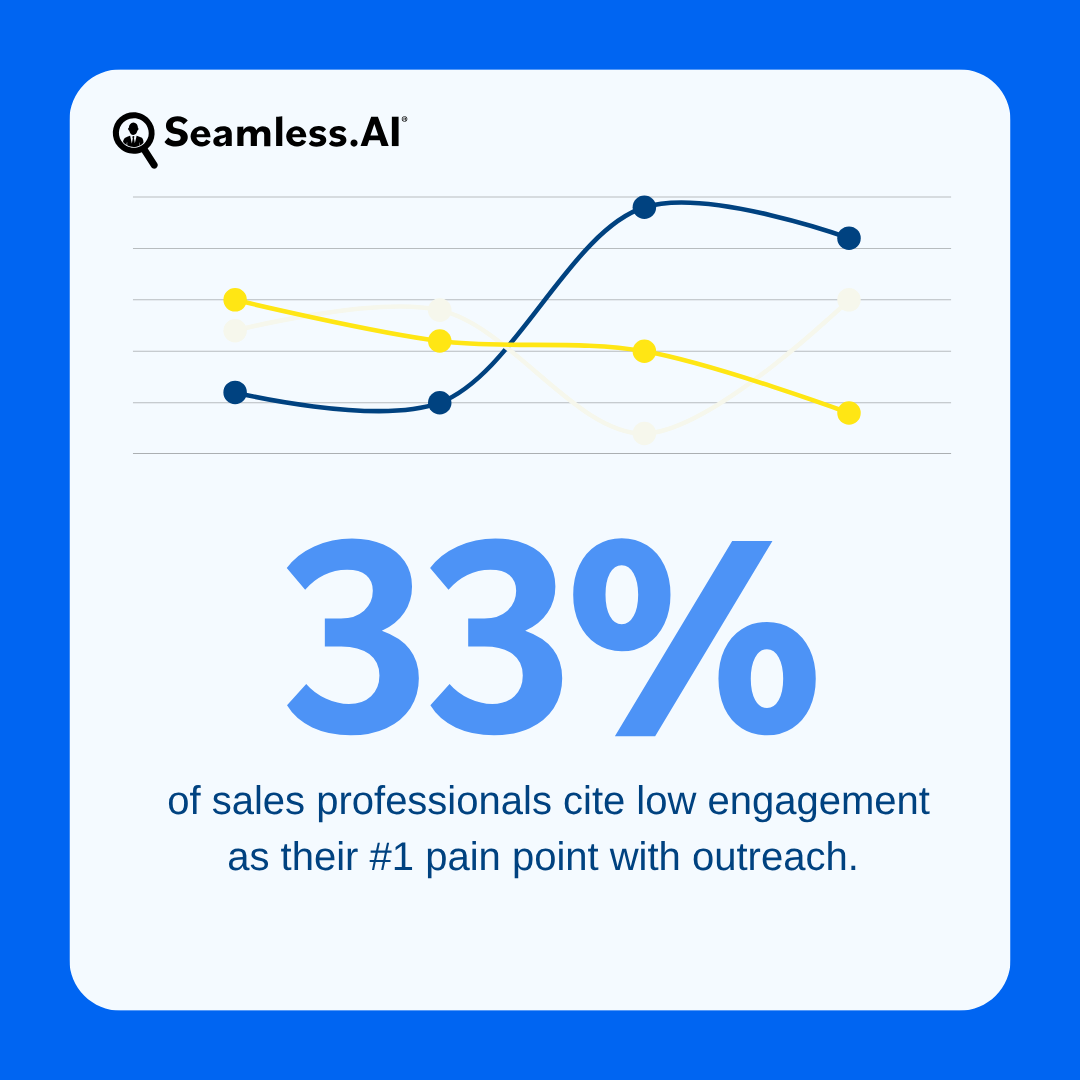
Stat: Only 21% of sales reps fully personalize their outbound emails. Yet low engagement is the #1 pain point for nearly a third (33%) of sellers.
How to win: Move beyond “Hi [First Name]” and use industry, role, or trigger-based context, such as a recent funding round or company initiative.
Tool Tip: Use platforms like Seamless.AI to research and incorporate relevant insights into messaging at scale, boosting both open and response rates.
Make AI Your Co-Pilot
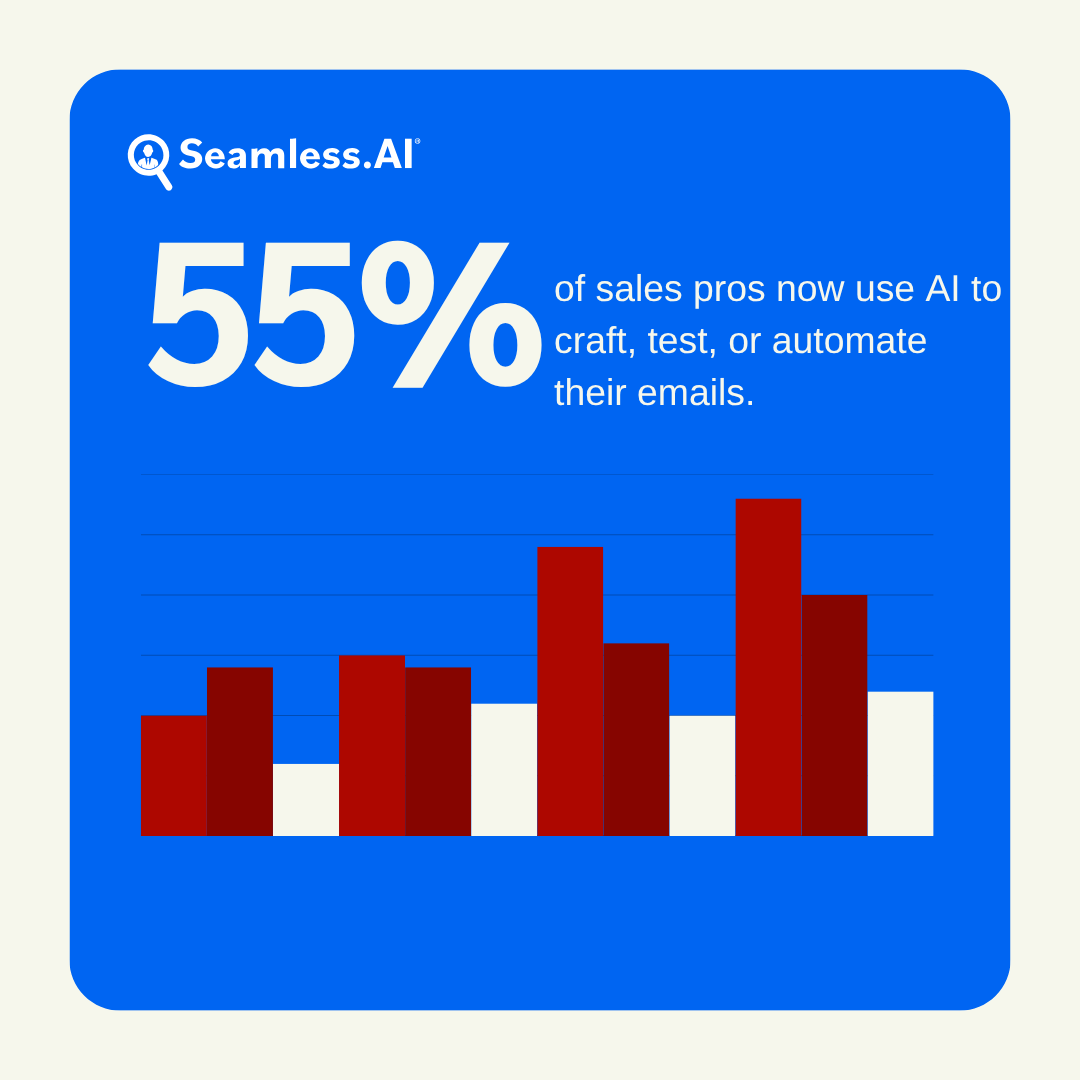
Stat: 55% of sales pros now use AI to craft, test, or automate their emails.
How to win: Combine automation with oversight: use AI to generate variations, but add a human touch for tone and targeting.
- Tool Tip: Use AI-driven tools to quickly A/B test subject lines and content, pinpointing what resonates with specific segments or personas.
Don’t Abandon Traditional Channels… Evolve Them
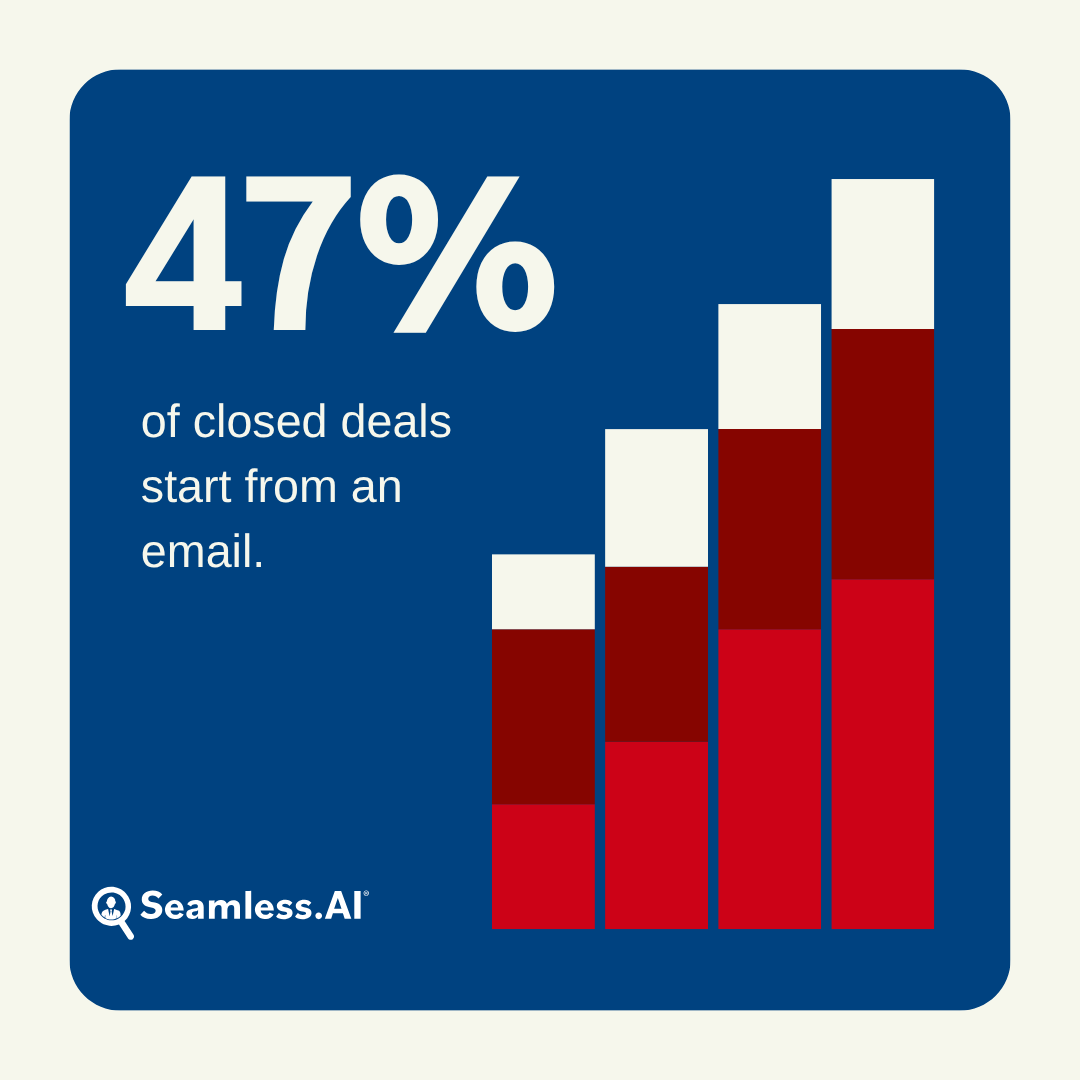
Stat: 47% of closed deals start with an email. LinkedIn drives warmer leads, and the phone is best for urgent, high-stakes follow-up.
How to win: Blend channels. Start relationships on social or at events, deepen them with personalized emails, and convert with timely calls.
- Pro Move: Sequence your outreach. Don’t start cold with a call. Instead, reach out on social for initial contact, warm up your leads, and then use calls strategically after digital engagement.
Clean Your Data—Constantly
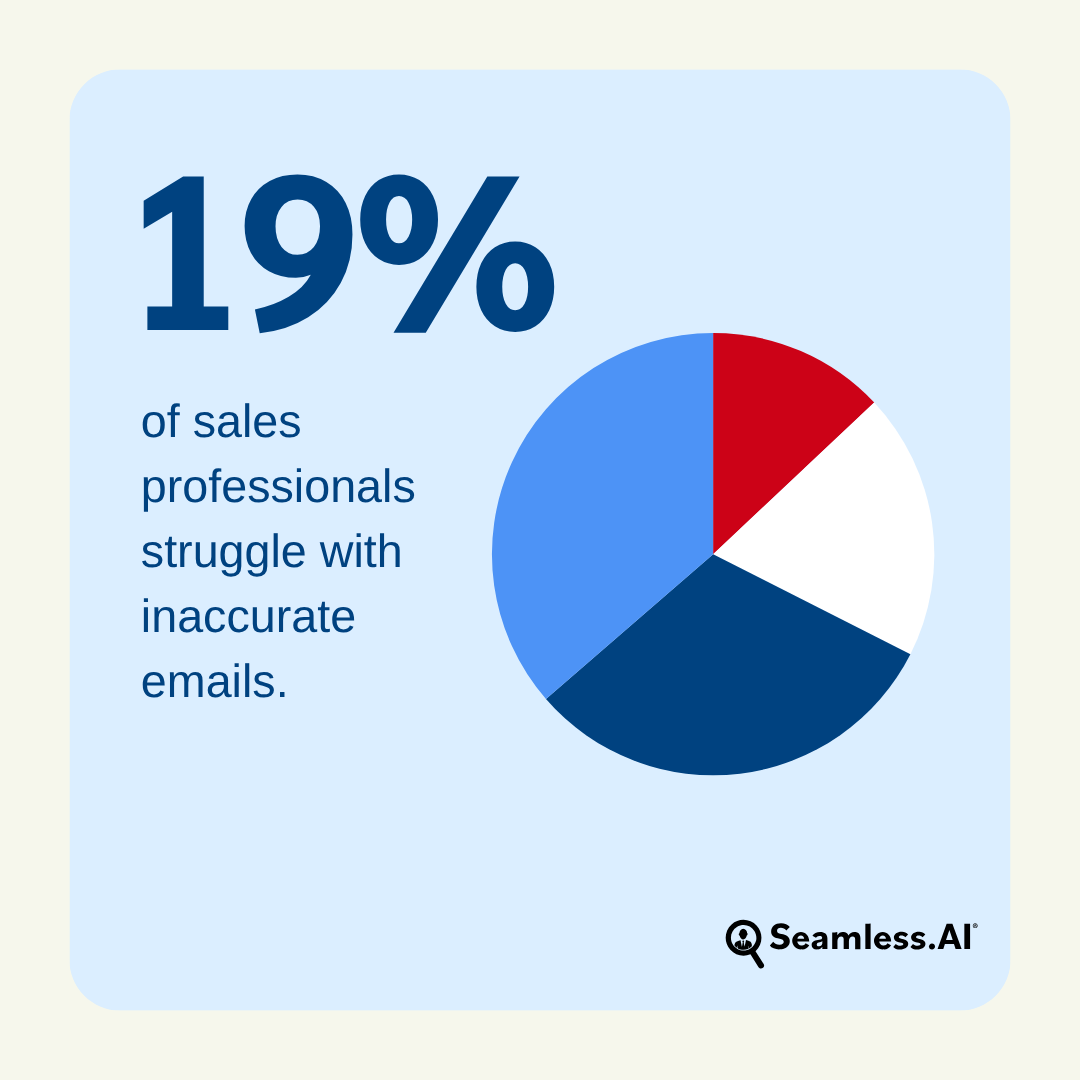
Stat: 19% of sellers cite inaccurate emails as a key pain point.
How to win: Regularly validate and update your lists. Bad data costs both opportunities and reputation.
- Tool Tip: Seamless.AI can provide real-time, verified contact information for your ICP, reducing bounce rates and keeping your database sharp.
What’s Next: Predictions for the Future of Sales Outreach
Sales outreach is evolving, and the results from the 2025 Sales Channel Survey suggest even more dramatic changes ahead. As technology and AI adoption reshape buyer expectations and sales teams face fiercer competition, tomorrow’s top performers will be those who adapt fastest.
Prediction 1: Personalized Outreach Becomes Table Stakes
Inboxes are full, and attention is fleeting. As buyers get savvier, generic cold emails and mass-blasted LinkedIn DMs will become increasingly ineffective. Just as people developed banner blindness for ads in the past, generic email subject lines will not convince consumers to click.
Prediction 2: AI Usage Will Become An Everyday Essential
With 55% of sales teams already leveraging AI for outbound email (and a surge in LinkedIn-enabled prospect research), automation will play a bigger role in the full sales cycle. Our Q1 data report covered AI adoption in sales for 2025.
Prediction 3: LinkedIn Will Define B2B Prospecting, But Multi-Channel Still Wins
Social is dominating calling as a top outreach channel, with 36% rating it the most effective for cold outreach, compared to just 16% for phone. LinkedIn will continue to lead the pack, but the most effective teams won’t just rely on social; they will integrate email, in-person networking, and strategic phone outreach into seamless workflows.
Prediction 4: Data Accuracy Will Separate the Winners from Stragglers
With nearly 1 in 5 pros blaming inaccurate lists for lost opportunities, the divide between teams who invest in real-time, verified data (and robust enrichment tools like Seamless.AI) and those who don’t, will become more pronounced.
Prediction 5: Sales Tech Stacks Will Focus On Integration
With so many platforms—email, CRM, social, AI, analytics—today’s high-growth teams are already prioritizing workflow integration. Tomorrow’s sales orgs will expect every tool to “talk” to one another, enabling unified data, seamless targeting, and a frictionless seller experience.
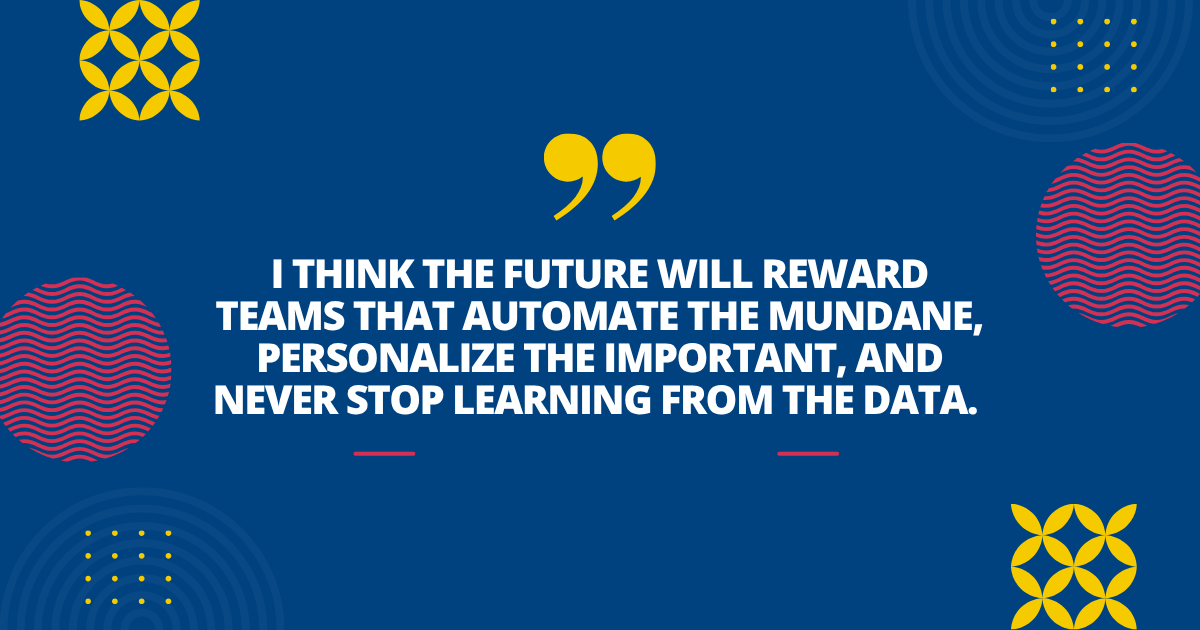
“I think the future will reward teams that automate the mundane, personalize the important, and never stop learning from the data.” — Survey Respondent, Sales Manager
Taken together, these trends point to a future where standing out demands more innovative use of data, relentless testing, and the automation of everything except what makes a message truly human.
Appendix: Full Data, Additional Resources & Media FAQ
Survey Methodology
- Timing: Q2 2025
- Sample: 64 sales professionals (AEs, SDRs, managers, leaders)
- Distribution: Via Seamless.AI network, LinkedIn, targeted invites
- Format: Blend of quantitative and qualitative/open text questions
How to Attribute This Data
For media, please attribute as follows: Data sourced from the 2025 Sales Channel Survey by Seamless.AI, n=64, Q2 2025.
Additional Resources
- Downloadable charts and infographics: [Contact us for high-res assets]
- Expert commentary/interview requests: salvatore.surra@seamlessleads.com
- Full survey questions or demo:
Media FAQ
Question: Can I cite individual statistics in my story?
Answer: Yes! Please attribute findings to the “2025 Sales Channel Survey.”
Question: Where can I find raw data or more granular demographics?
Answer: We’re happy to share anonymized data tables or detailed breakdowns by industry or company size.
Question: Is this survey focused on a specific region or industry?
Answer: The survey encompasses a broad cross-section of industries and company sizes, with a majority of responses from US-based sales teams, but also includes global participation.
Question: Can I republish the infographics and/or charts?
Answer: All visuals may be republished with proper credit to Seamless.AI.
Question: Is there someone available for expert interviews or commentary?
Answer: Yes! Please reach out to our marketing team at marketing @ seamlessleads.com to arrange interviews with Seamless.AI leadership or survey analysts.
Question: How does Seamless.AI address the “personalization gap” identified in the survey?
Answer: Seamless.AI enables sales teams to quickly enrich contacts with real-time, accurate data, supporting efficient and meaningful personalization in every message and channel.
Final Note
The data, stories, and trends in this report are intended to support journalists, analysts, and industry leaders in understanding the real state of sales outreach—and how tomorrow’s leaders can win with smarter, more personalized, and more effective strategies.
For additional resources, further statistics, or interview opportunities, please contact our marketing or sales team to book a demo today. Thanks!
Discover More
Expert business and sales advice that drives success.




-%20Blog%20header%20image%20760x600.png)










